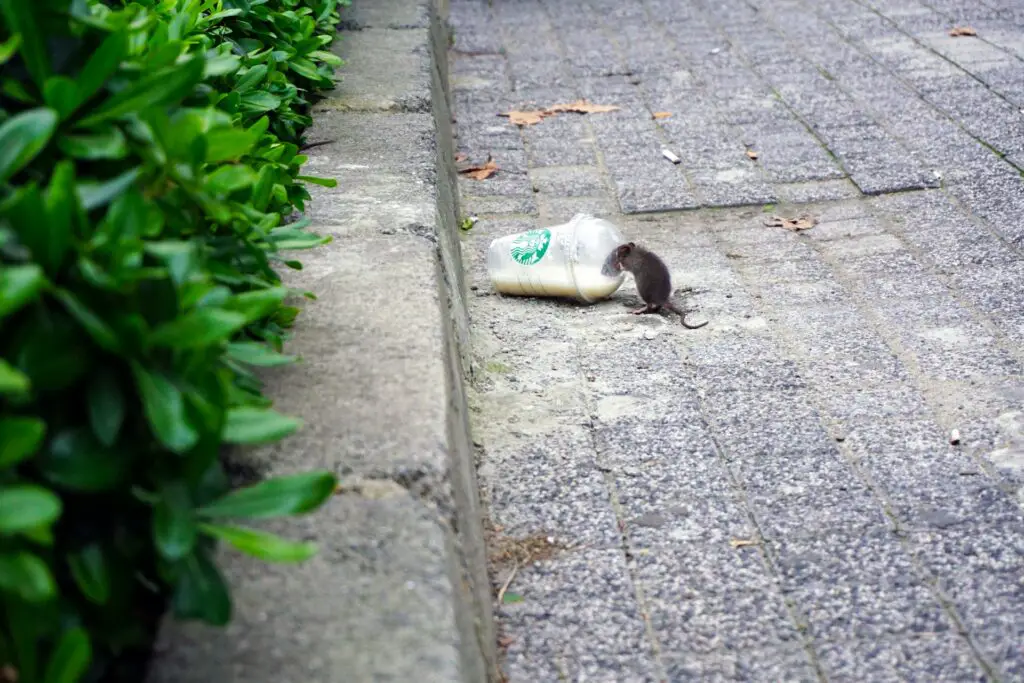Discover the methods for identifying and sealing mice holes to safeguard your home. This guide provides practical tips and long-term strategies for effective rodent control and prevention.
Introduction to Mouse Hole Identification
Effective rodent control begins with recognizing the signs of mice activity. Learn to identify the entry points that allow these pests into your home.
Recognizing Signs of Mice Presence and Locating Entry Points
Some indicators of mouse presence are scratching sounds, droppings, and gnawed items. Identifying these signs is critical for timely intervention.
Mice make their way into homes through different entry points. Inspect doors and windows, kitchen cabinets, and gaps in the foundation for potential mouse entry points. Mice can fit through tiny holes and gaps, so thoroughness is crucial.

Essential Materials for Sealing Mice Holes
If you intend to fill mice holes, you need to stock the following:
- Steel wool
- Copper mesh
- Caulk
- Spray foam to block off rodent entry points.
The Efficacy of Steel Wool in Rodent Control
Steel wool is a go-to material for closing holes and gaps, deterring rodent infestations by blocking potential entry points.
Copper Mesh: A Sturdy Barrier Against Mice
Copper mesh is a robust barrier, preventing pesky rodents from squeezing through openings around cable lines and wire mesh.
The Role of Caulk and Silicone Sealants
Using a caulk gun, apply caulk or silicone sealants to cracks and crevices, ensuring a secure seal against mice.
Advantages of Using Spray Foam for Filling Holes
Spray foam expands to fill rodent holes, solving a persistent mouse problem.
Step-by-Step Guide to How to Fill Mice Holes
Follow a systematic approach to seal your home against mice, from doors and windows to exterior walls.
Sealing Doors and Windows
Install weather stripping on doors and windows to eliminate mouse entry points, particularly in attached garages.
Reinforcing Vents to Prevent Mice Entry
Secure air vents with wire mesh and inspect electrical wiring and gas lines for openings that mice can fit through.
Securing Gaps Around Utility Lines
Employ a vent cover to block off access points around utility lines, denying mice the opportunity to enter.
Protecting Fireplaces and Drains from Mice
Use backing material like copper mesh and spray foam to fill gaps, ensuring rodents can’t chew through to gain access.
Fortifying Exterior Walls Against Rodents
Examine exterior walls for vulnerabilities, seal holes, and reinforce weak spots to keep rodents at bay.
Long-Term Strategies to Deter Future Infestations
You’ll need to adopt strategies that make your space less inviting to these pests to keep your home mouse-free in the long run. This involves regular home upkeep, proper food storage, vigilant pet food management, and consistent pest control actions. By staying proactive, you can reduce the risk of mice returning to your home.

Regular Home Maintenance to Discourage Mice
Consistent home maintenance is fundamental to discouraging mice. Mice can chew through many materials, so inspect your home for cracks or holes. If you find any, use a combination of steel wool, which is tough for mice to gnaw through, and spray foam to fill these vulnerabilities, creating a robust barrier.
Proper Food Storage Techniques
Prevent mice infestations by storing food correctly. Use airtight containers; they keep food fresh and prevent the aromas from attracting mice. Ensure all food stored in your pantry or kitchen has a seal—this simple step is a cornerstone of mouse-proofing your home.
Effective Pet Food Management
Leftover pet food is a buffet for rodents. Store pet food in sturdy containers with tight-fitting lids To avoid attracting rodents. Be diligent about clearing pet bowls after meals and keep pet feeding areas clean. Proper pet food management is vital to keeping unwelcome mice at bay.
Implementing Routine Pest Control Measures
Routine pest control is essential to preventing rodent infestations. This includes checking for and sealing up any potential entry points, setting mouse traps in areas prone to mice activity, and keeping your home clean to deter rodents. Integrate these measures into your maintenance schedule for effective mouse control.
Alternative Approaches to Mice Deterrence
Aside from traditional methods, you can employ alternative tactics for mice deterrence. These include using specific scents or materials that mice dislike, which can work as supplementary measures to the conventional sealing and filling techniques. Let’s explore some of these creative solutions.
The Use of Essential Oils in Repelling Mice
Essential oils are a natural alternative for rodent control. Some scents, like peppermint oil, are known to be unpleasant to mice. Try soaking cotton balls in these oils and placing them near suspected entry points, such as weather stripping or door sweeps, to help keep the mice away.
Cultivating Plants That Mice Find Repellent
Mice steer clear of certain plants, so consider cultivating these in your home or garden. Placing them near doors, windows, kitchen cabinets, and utility lines can deter mice from entering your home. Also, these plants beautify your space while protecting areas like air vents and electrical wiring from becoming mouse entry points.
Incorporating Scents That Mice Dislike Into Your Home
To further mouse-proof your home, incorporate scents that mice dislike. Fill small holes with steel wool and seal gaps around pipes and foundations to prevent entry. Mice detest the smell of products like ammonia and vinegar, so using these can help wreak havoc on a mouse’s sense of smell and keep them away.
The Prevention Perspective: Keeping Mice at Bay
Prevention is better than cure, especially when it comes to mice. You can prevent mice from considering your home an attractive target by using the appropriate backing material and maintaining a clean and secure environment. Stay vigilant and always look out for signs of mice to take swift action.
Understanding Mice Behavior for Effective Prevention
Understanding the behavior of mice is crucial for effective prevention. Knowing their nesting habits, feeding preferences, and common entry points helps in designing a prevention strategy that is both efficient and lasting. Regular checks and updates to your tactics can help maintain a mouse-free home.
Environmental Adjustments to Reduce Attractiveness to Mice
Make environmental adjustments to your home to reduce its attractiveness to mice. This includes removing clutter, securing trash bins, and keeping vegetation trimmed back from the house. These steps can minimize the chances of mice finding shelter or food sources on your property.
Community Efforts and Neighborly Coordination in Rodent Control
Rodent control is most effective when it’s a community effort. Coordinating with neighbors to set mouse traps, identify rodent entry points, and share tips on mouse extermination can strengthen the mouse control efforts throughout the neighborhood, making it less inviting for these pests.
Expert Insights and Additional Resources
For those dealing with stubborn mouse problems, expert insights can be invaluable. Professionals bring knowledge of the latest deterrents and exclusion techniques. They often recommend securing pet food, as it’s a common attractant for rodents. Exploring additional resources like pest control forums, educational materials, and product reviews can also provide new strategies to reinforce your anti-rodent measures.
Accessing Professional Help for Persistent Mice Issues
If you’ve tried all the DIY solutions and still have a mouse problem, it might be time to call the experts. Pest control professionals have the tools and expertise to deal with challenging infestations effectively. They can identify and seal even the most hidden entry points, applying their knowledge to ensure your home becomes and remains mouse-free.
Learning from Case Studies: Successful Mice Exclusion Experiences
Case studies of successful mice exclusion can offer valuable lessons. They highlight the importance of a comprehensive approach, combining sealing methods, habitat modification, and sometimes even rodent-proof construction materials. Learning from these real-life scenarios can guide you in creating a strategic plan tailored to keep your home free from mice invasions in the long term.
Wrapping Up: Your Home, Mouse-Free
You can keep your home mouse-free by sealing gaps, filling holes with appropriate materials, and maintaining a diligent cleaning regimen, especially around dryer vents. Remember, the key is to remain vigilant and proactive in your efforts to deter and prevent mice.
Effective hole-filling techniques include using steel wool and spray foam for a robust fix, with regular inspections and maintenance. By staying on top of these tasks, you create a strong defense against mice and ensure your home remains a no-go zone for these pests.
Maintaining a mouse-free home requires more than just a one-time fix. It’s crucial to embrace prevention as a continuous effort. Mice can chew through many materials, so regular inspections and repairs are vital. Seal cracks, replace weather stripping, and watch potential entry points. That way, you’ll block current access and deter future invaders from making your home theirs.
Keeping mice at bay demands your constant attention. Mice are clever and persistent, so you must be even more so. Establish a routine to check for signs of activity, like droppings or gnaw marks. Stay on top of cleaning and decluttering, as these practices make your space less appealing to these unwanted guests. Your continuous vigilance is the key to a lasting solution against rodent intrusions.

